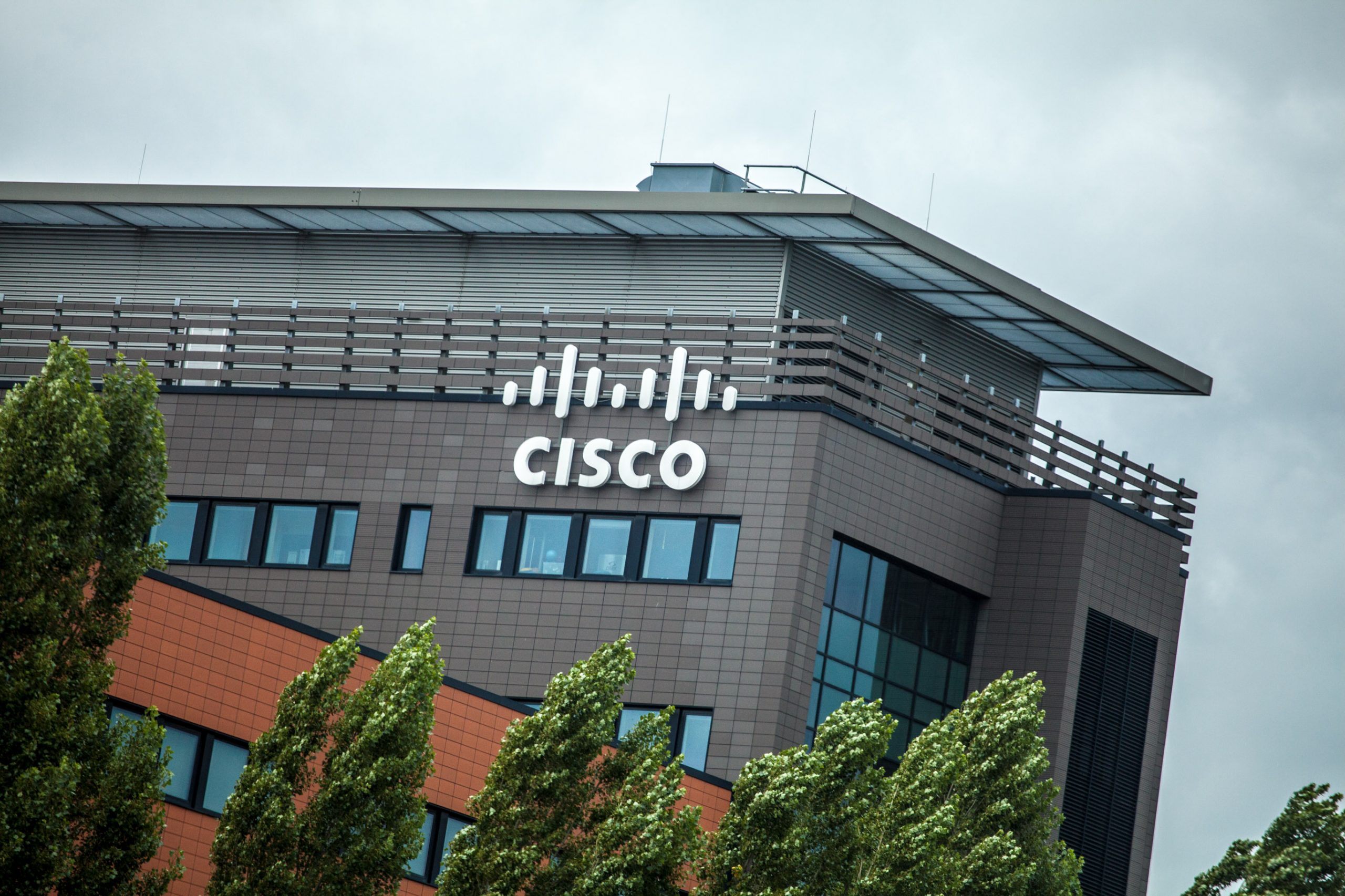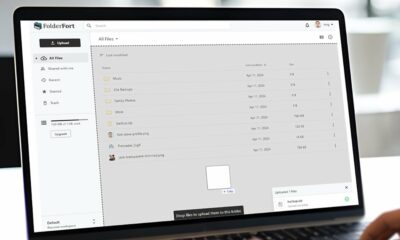TECHNOLOGY
More than 90% of businesses are unable to properly succeed in the Data Economy

Just 6% of businesses globally use, access, and share data in a way that grants them all the business benefits provided by a robust data strategy, according to new research from Snowflake, the Data Cloud company.
The study of 1,000 business leaders and technology managers highlights the significant hurdles that the majority of organisations face in participating fully in the Data Economy.
The Data Economy, as defined by Snowflake, enables businesses to tackle the most complex business problems and elevate the services they can offer above their competitors. It allows them to build new revenue streams by taking tailored data products and services to their customers, partners, and any other organisation participating in the Data Economy.
According to the research, at the helm of the Data Economy are the ‘Data Economy Leaders’, who are involved in developing strategies that democratise access to data, integrate new technology, and demonstrate the true business benefits of capitalising in the Data Economy. While many companies have ambitions to take advantage of data to give them the business edge needed to be successful, these organisations require guidance to lay the right foundations. In fact, according to the study, only 38% of businesses are in a position to extract value from their data and use it to inform the decisions they make.
As part of the study, Snowflake identified the four key attributes an organisation needs to possess to become a Data Economy Leader. These include:
• Unimpeded access to data, no matter where it resides;
• Using data to inform all or most business decisions;
• Using data to advance strategic goals, such as growing revenue and identifying new business opportunities;
• The ability to share data securely with external partners.
The organisations that possess these four attributes are considered Data Economy Leaders, and as a result achieve significantly more than those that don’t use, access or share data in these ways. For example, 77% of Data Economy Leaders experienced annual revenue growth over the past three years, while just 36% of ‘Laggards’ – the lowest-performing businesses surveyed – can say the same. Moreover, 60% of Leaders saw their market share grow over this period, compared to only 31% of Laggards.
The businesses that aren’t using their data to its full potential are being left behind by the competition, which actively use data to strategically support the company and make critical business decisions. For example, 42% of organisations surveyed reported that they use data to identify risk and prevent fraud within their business – the most common use for how data is used – demonstrating a growing trend for businesses to use data in a preventative way, to protect themselves and their customers. In addition, 41% of organisations use data strategically to launch new revenue streams or pricing models and 40% do to reveal new market opportunities.
Jennifer Belisssent, principal data strategist at Snowflake, said: “Successful organisations will attain the business advantage that comes from access to data, data services, solutions, and collaboration – which can only be found in the Data Economy.
“Forward-thinking organisations are using all that the Data Economy offers to solve the most complex business problems, improve customer experiences and crackdown on fraud. The Laggards that don’t yet have control over all of the data they possess will find themselves falling behind of the competition, and potentially at increased risk of security threats”.
To join the Data Economy, businesses need to first get to grips with their data. However, many struggle to manage and effectively extract value from it, according to Snowflake. The ability to access all forms of data is an integral part of a data strategy, however half of organisations lack fully unrestricted access to data. Many organisations also fail to break down internal data silos, impeding data sharing and collaboration across an organisation’s business units – only 55% say that sharing can happen freely in their organisation.
Looking at the barriers to full ‘Data Economy Leader’ status, 49% of respondents believe their company lack a strategy from C-level executives to reposition the businesses as ‘data-forward’. Many companies also believe that the technologies they use are not fit for the Data Economy. An effective data platform must be scalable and elastic and manage a near-unlimited amount of data, yet fewer than one-third of respondents say their data management solutions are easily scalable. More importantly, less than one-quarter say their solution lets them share, access and integrate data in near real-time.
“The barriers stopping Laggards from fully participating in the Data Economy can be split into three key areas; technology, people and process,” adds Belisssent. “Most of these organisations are still using legacy on-premises technology which is not scalable or suitable for modern data needs. In addition, their leaders lack the skills required to create and execute their data strategies, and are unable to implement processes that enable them to share and collaborate on data. In contrast, Leaders are capitalising on data platforms in the cloud. They have strong, data-literate leadership that encourages an enterprise-wide approach to data innovation and have established processes that make their data mutually available.”
While only constituting 6% of businesses surveyed, the Data Economy Leaders are present in all industries from healthcare and life sciences to technology to retail and CPG. Once plugged into the Data Economy, they are part of a mutually beneficial ecosystem, both providing and receiving significant advantages from sharing data and data-driven insights with other participants via data management technologies. A number of Snowflake’s customers are Data Economy Leaders, using data to reveal new market opportunities, streamline processes and deliver a more personalised customer service. Some examples include:
• Pizza Hut’s analytics team used weather and geolocation data to correlate weather patterns and consumer purchasing habits and used this data to optimise target marketing campaigns, getting tailored messages to consumers who are most receptive to them.
• Sainsbury’s launched a service that enables customers to instantly compare its products to those of its competitors.
A deeper analysis of the Data Economy Leaders revealed several other areas in which its members considerably outperform their peers, with their strengths exhibited across three main pillars; people, process and technology.
• People
o Strong leadership is essential if a business is to thrive in the Data Economy. For almost two-thirds (63%) of Data Economy Leaders, there is a C-level mandate to become data forward.
• Process
o Leaders are better at aligning data objectives across teams, with 62% having a data or analytics centre of excellence that coordinates data policies, and 54% enabling users to access all available data through a single system or application.
• Technology
o Twice as many Leaders as Laggards (50% vs. 24%) describe the data storage and management technologies they use as ‘easily scalable and elastic’. Leaders draw upon a greater volume of data, in different forms, while breaking down silos and collaborating with both internal and external partners.
The survey was commissioned by Snowflake and was completed in November and December 2021. The survey was carried out across eight countries: Australia, Canada, France, Germany, India, Japan, the United Kingdom (UK), and the US. The 1,000 respondents consisted of C-level business executives and board members and senior technology managers, including 166 in the UK.
Source link
TECHNOLOGY
Next-gen chips, Amazon Q, and speedy S3

AWS re:Invent, which has been taking place from November 27 and runs to December 1, has had its usual plethora of announcements: a total of 21 at time of print.
Perhaps not surprisingly, given the huge potential impact of generative AI – ChatGPT officially turns one year old today – a lot of focus has been on the AI side for AWS’ announcements, including a major partnership inked with NVIDIA across infrastructure, software, and services.
Yet there has been plenty more announced at the Las Vegas jamboree besides. Here, CloudTech rounds up the best of the rest:
Next-generation chips
This was the other major AI-focused announcement at re:Invent: the launch of two new chips, AWS Graviton4 and AWS Trainium2, for training and running AI and machine learning (ML) models, among other customer workloads. Graviton4 shapes up against its predecessor with 30% better compute performance, 50% more cores and 75% more memory bandwidth, while Trainium2 delivers up to four times faster training than before and will be able to be deployed in EC2 UltraClusters of up to 100,000 chips.
The EC2 UltraClusters are designed to ‘deliver the highest performance, most energy efficient AI model training infrastructure in the cloud’, as AWS puts it. With it, customers will be able to train large language models in ‘a fraction of the time’, as well as double energy efficiency.
As ever, AWS offers customers who are already utilising these tools. Databricks, Epic and SAP are among the companies cited as using the new AWS-designed chips.
Zero-ETL integrations
AWS announced new Amazon Aurora PostgreSQL, Amazon DynamoDB, and Amazon Relational Database Services (Amazon RDS) for MySQL integrations with Amazon Redshift, AWS’ cloud data warehouse. The zero-ETL integrations – eliminating the need to build ETL (extract, transform, load) data pipelines – make it easier to connect and analyse transactional data across various relational and non-relational databases in Amazon Redshift.
A simple example of how zero-ETL functions can be seen is in a hypothetical company which stores transactional data – time of transaction, items bought, where the transaction occurred – in a relational database, but use another analytics tool to analyse data in a non-relational database. To connect it all up, companies would previously have to construct ETL data pipelines which are a time and money sink.
The latest integrations “build on AWS’s zero-ETL foundation… so customers can quickly and easily connect all of their data, no matter where it lives,” the company said.
Amazon S3 Express One Zone
AWS announced the general availability of Amazon S3 Express One Zone, a new storage class purpose-built for customers’ most frequently-accessed data. Data access speed is up to 10 times faster and request costs up to 50% lower than standard S3. Companies can also opt to collocate their Amazon S3 Express One Zone data in the same availability zone as their compute resources.
Companies and partners who are using Amazon S3 Express One Zone include ChaosSearch, Cloudera, and Pinterest.
Amazon Q
A new product, and an interesting pivot, again with generative AI at its core. Amazon Q was announced as a ‘new type of generative AI-powered assistant’ which can be tailored to a customer’s business. “Customers can get fast, relevant answers to pressing questions, generate content, and take actions – all informed by a customer’s information repositories, code, and enterprise systems,” AWS added. The service also can assist companies building on AWS, as well as companies using AWS applications for business intelligence, contact centres, and supply chain management.
Customers cited as early adopters include Accenture, BMW and Wunderkind.
Want to learn more about cybersecurity and the cloud from industry leaders? Check out Cyber Security & Cloud Expo taking place in Amsterdam, California, and London. Explore other upcoming enterprise technology events and webinars powered by TechForge here.
TECHNOLOGY
HCLTech and Cisco create collaborative hybrid workplaces

Digital comms specialist Cisco and global tech firm HCLTech have teamed up to launch Meeting-Rooms-as-a-Service (MRaaS).
Available on a subscription model, this solution modernises legacy meeting rooms and enables users to join meetings from any meeting solution provider using Webex devices.
The MRaaS solution helps enterprises simplify the design, implementation and maintenance of integrated meeting rooms, enabling seamless collaboration for their globally distributed hybrid workforces.
Rakshit Ghura, senior VP and Global head of digital workplace services, HCLTech, said: “MRaaS combines our consulting and managed services expertise with Cisco’s proficiency in Webex devices to change the way employees conceptualise, organise and interact in a collaborative environment for a modern hybrid work model.
“The common vision of our partnership is to elevate the collaboration experience at work and drive productivity through modern meeting rooms.”
Alexandra Zagury, VP of partner managed and as-a-Service Sales at Cisco, said: “Our partnership with HCLTech helps our clients transform their offices through cost-effective managed services that support the ongoing evolution of workspaces.
“As we reimagine the modern office, we are making it easier to support collaboration and productivity among workers, whether they are in the office or elsewhere.”
Cisco’s Webex collaboration devices harness the power of artificial intelligence to offer intuitive, seamless collaboration experiences, enabling meeting rooms with smart features such as meeting zones, intelligent people framing, optimised attendee audio and background noise removal, among others.
Want to learn more about cybersecurity and the cloud from industry leaders? Check out Cyber Security & Cloud Expo taking place in Amsterdam, California, and London. Explore other upcoming enterprise technology events and webinars powered by TechForge here.
TECHNOLOGY
Canonical releases low-touch private cloud MicroCloud

Canonical has announced the general availability of MicroCloud, a low-touch, open source cloud solution. MicroCloud is part of Canonical’s growing cloud infrastructure portfolio.
It is purpose-built for scalable clusters and edge deployments for all types of enterprises. It is designed with simplicity, security and automation in mind, minimising the time and effort to both deploy and maintain it. Conveniently, enterprise support for MicroCloud is offered as part of Canonical’s Ubuntu Pro subscription, with several support tiers available, and priced per node.
MicroClouds are optimised for repeatable and reliable remote deployments. A single command initiates the orchestration and clustering of various components with minimal involvement by the user, resulting in a fully functional cloud within minutes. This simplified deployment process significantly reduces the barrier to entry, putting a production-grade cloud at everyone’s fingertips.
Juan Manuel Ventura, head of architectures & technologies at Spindox, said: “Cloud computing is not only about technology, it’s the beating heart of any modern industrial transformation, driving agility and innovation. Our mission is to provide our customers with the most effective ways to innovate and bring value; having a complexity-free cloud infrastructure is one important piece of that puzzle. With MicroCloud, the focus shifts away from struggling with cloud operations to solving real business challenges” says
In addition to seamless deployment, MicroCloud prioritises security and ease of maintenance. All MicroCloud components are built with strict confinement for increased security, with over-the-air transactional updates that preserve data and roll back on errors automatically. Upgrades to newer versions are handled automatically and without downtime, with the mechanisms to hold or schedule them as needed.
With this approach, MicroCloud caters to both on-premise clouds but also edge deployments at remote locations, allowing organisations to use the same infrastructure primitives and services wherever they are needed. It is suitable for business-in-branch office locations or industrial use inside a factory, as well as distributed locations where the focus is on replicability and unattended operations.
Cedric Gegout, VP of product at Canonical, said: “As data becomes more distributed, the infrastructure has to follow. Cloud computing is now distributed, spanning across data centres, far and near edge computing appliances. MicroCloud is our answer to that.
“By packaging known infrastructure primitives in a portable and unattended way, we are delivering a simpler, more prescriptive cloud experience that makes zero-ops a reality for many Industries.“
MicroCloud’s lightweight architecture makes it usable on both commodity and high-end hardware, with several ways to further reduce its footprint depending on your workload needs. In addition to the standard Ubuntu Server or Desktop, MicroClouds can be run on Ubuntu Core – a lightweight OS optimised for the edge. With Ubuntu Core, MicroClouds are a perfect solution for far-edge locations with limited computing capabilities. Users can choose to run their workloads using Kubernetes or via system containers. System containers based on LXD behave similarly to traditional VMs but consume fewer resources while providing bare-metal performance.
Coupled with Canonical’s Ubuntu Pro + Support subscription, MicroCloud users can benefit from an enterprise-grade open source cloud solution that is fully supported and with better economics. An Ubuntu Pro subscription offers security maintenance for the broadest collection of open-source software available from a single vendor today. It covers over 30k packages with a consistent security maintenance commitment, and additional features such as kernel livepatch, systems management at scale, certified compliance and hardening profiles enabling easy adoption for enterprises. With per-node pricing and no hidden fees, customers can rest assured that their environment is secure and supported without the expensive price tag typically associated with cloud solutions.
Want to learn more about cybersecurity and the cloud from industry leaders? Check out Cyber Security & Cloud Expo taking place in Amsterdam, California, and London. Explore other upcoming enterprise technology events and webinars powered by TechForge here.














You must be logged in to post a comment Login